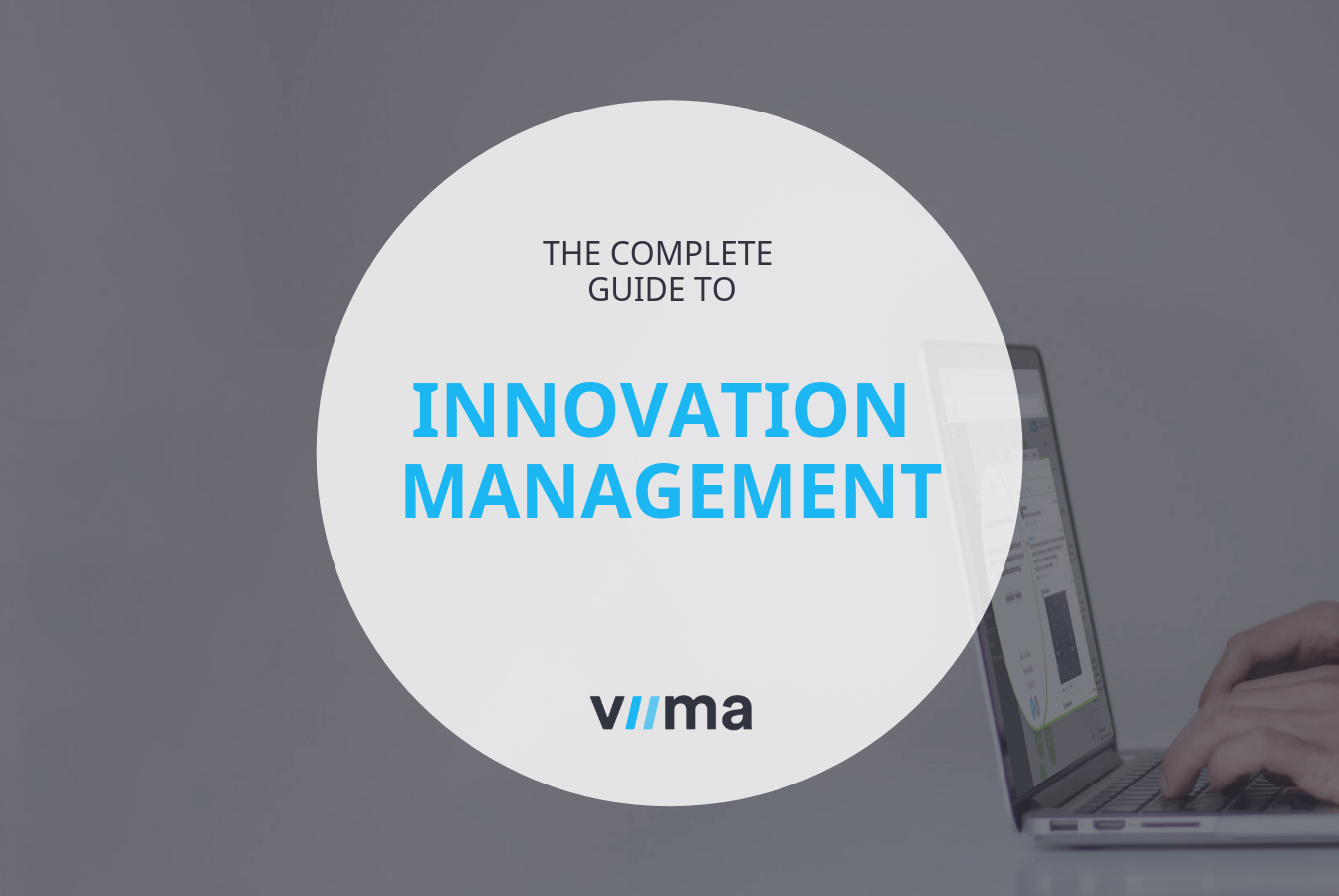Common Challenges in Innovation Management
To begin, I will start by sharing a case where I was part of an attempt to create innovation into an organization within a changing environment. The intents and the purpose for the change was motivated, but the execution was severely lacking.
The process started with the head of the team introducing to us, a collection of young professionals, a brief history of the past techniques that have been used until now. The head of Rise, as the organization henceforth will be called, explained in detail how things were used to be done, and the difference to what is perceived to be the technique in the future. It was a day of inspirational lectures about how we, the team, could be part of something new, to be on the edge of the profession. After the session, I felt inspired to think about how techniques could be changed to fit this new style.
Weeks went by when I, and many others, were thinking about what could be done. Some crude ideas were thrown around in the break room. Some more elaborate changes and others just brainstorming outcomes. When time passed, the ideas were less frequently talked about, the topic of new techniques did not come up as much anymore. More time passed, and this push for change had been forgotten, all these "old techniques" were still being used. Looking around, I did not see any change had been made to practices or techniques. The first excitement to be on top of the wave with Rise was gone. Me, and my colleagues, settled on the old and trusty methods.

The attempt to make this big change failed miserably. Now, years later, thinking about this experience that I was a part of raises thoughts of lessons to be learned. What the management failed to do resulted in a valuable lesson for everyone part of this change process, whether they realize it or not.
I will explain these lessons and reasons to why the management failed with encouraging innovation. I will also bring up other challenges to innovation management that are tied with failing the process. The following themes are covered: Challenges of the management, challenges with the organization environment, and challenges within organizational structures. Finally, I will end by presenting three additional cases that can be studied for further examples.
Table of contents
Challenges of the management
While the push for an innovation project usually comes from the management, especially when there is a burning need for new improvements, there are many things that can go wrong with management involvement in change. Here are five categories of challenges management face within when managing change.
Creating excitement
Depending on the company culture, managers are still being relied upon when one seeks support and approval. At Rise, the only effort the management put into the change project was the kick-off event. Even though many of us were eager to further the change, there seemed to be no real effort from the management. You can imagine the let-down I felt when the ideas and the excitement toned down. Therefore, the first lesson to be learned is;
The more excited you as a manager are about creating change, the more your employees will feed off of that energy.
Lately, there has been a growing amount of research pointing out this importance of management involvement in innovational activities. Leadership is needed for projects to be successful and for a greater amount of innovations to take place. If your boss expresses interest in what you do, and embraces you initiating change, motivation will increase. Involvement can be as simple as a small follow up on each started project. How is the project going, are there any advances? People like to boast about their achievements. Striking a conversation about challenges the innovator had during the process of developing a new idea can induce new thought patterns. Maybe there is something that still needs to be ironed out! Talking about the process and having innovators explain the process will strengthen the innovators courage and can help with structuring the thoughts for better results.
Executing with a clear strategy
At Rise there seemed to be a lack of strategy and clear goals with this change project. Research results show that more innovative companies have a clear structure for innovation. Everyone should be aware of the process’ status and the requirements an advance has to fulfil in order to be developed further. Thinking back on the change project within Rise, I am certain the management did not have a clear path they were following. Or if they had, it was definitely not evident. The uncertainty of what was expected made it hard to know what was something that could be developed further, what was not beneficial to continue, and which other ideas had already been advanced. On top of it all, it was uncertain if the ideas were considered at all. Lesson two;
Have a clear strategy and set up goals to focus development and find purpose for actions.
Creating a plan & communicating with transparency
Without a plan for change actions, it is uncertain through which mediums developments need to be shared in order for them to be spread out to the whole organization. A plan, and clear processes of incubation, aids the development of ideas. Clarity makes implementation easier as innovators do not need to figure out the diffusion as well as the necessities of their innovation within the organization to achieve organization wide adoption. As a case study, published in the Emerald Insight journal Strategic Direction, suggest "Clearly articulated strategies and roadmaps can provide transparency and direction for innovation.", planning and transparency are important within change projects. Adobe's kickbox, an innovation program that previously also has been mentioned within our blogs, is a great example of successful planning. The box is an easy aid to foster innovation in a transparent way. Therefore, lesson three;
Create a plan of action and be transparent about the advances of the different projects that emerge through innovation.
At Rise, it would have been a challenge to get an innovation to the attention of the management, let alone the organization. Since there were no plan of how these innovations and improvements were to be presented and put forward, it seemed an impossible task to try to innovate. Had there been a clear path of testing and adoption, the excitement and the eager to be on the top of the wave would have lasted longer I believe. Something simple could be a transparent medium for collection of ideas with a clear process for testing and improvement. Guiding from the more experienced, and collaboration to improve on the original could give the small push an idea needs to transform into an innovation.

Pushing the change
Some amount of control is needed. While this might seem contradicting to the rest of the content within this blog post, an amount of control is not illogical. With control I mean directions, pushes, and encouragement to both pursue new and to embrace the new. To change the behavior and the practices of employees within an organization these light forms of control are needed. Without having someone pushing implementation of innovations, the potential innovations easily remain ideas. While working at Rise, this “control” was completely missing. I saw no encouragement, no push, and no direction adjustment from any of the managers. The lack of encouragement to embrace the new lead to a lack of trying. Hence, the ideas did not reach adoption within the organization. Here we have lesson four;
Exercise a form of control that gives small pushes and direction to further change, something that increases encouragement. But, refrain from control that restrict action and discourage irregularity.
Easing resistance
Encouraging knowledge sharing between colleagues and changing the attitudes about change of employees has been recognized to be a difficult task. There is usually even some resistance to change, something that happened at Rise as well. It was easier to continue with the old when there were no pushes for new. And, since there were no “coaches” to encourage development, innovation did not occur.
To have successful development it is beneficial to understand change resistance and the specific hinders of your particular field. Whether resistance is toward the introduction of new resources, such as manufacturing machines or new elaborate programs, updated practices or new disrupting theories, this resistance has founded reasons. For example, resistance can occur from the uncertainty of the future, employees can worry that changes will make them redundant. Resistance can also come from fear of the new where the learning process is perceived as too challenging.
The perception might reside in rumors or misconceptions about the new. Resistance can also form through lack of motivation, or lack of the feeling for purpose. Why should the employee help with innovation, is there something to benefit from other than bringing in business to the employee? Does contribution give something to the employee? “The corporate need for innovation must appeal the employee’s heart.” (Gupta, 2011). Many more reasons can be found, but a lesson can be derived, lesson five;
Find out the reasons to resistance of change and give positive encouragement, sufficient training, and sound counter arguments to ease the difficulty to adopt and develop the new.
Challenges with the organization environment
A lot can go wrong already before an effort to implement the innovation in the organization is made. Company culture is an important aspect of innovation success. Sudden changes in how things are done is hard to incorporate into the daily activities. When the head of the team at Rise introduced the innovation project to us, I think, he expected us to start a change process immediately. A change process, where our methods and practices would evolve into something new and revolutionary. A change process where innovations are to be introduced, something that could change the whole field.
What was missing, however, was a nurturing environment and encouragement to go over each obstacle in changing behavior. Unanswered questions remained. Is failure accepted, what happens if something fails completely? Can something be tested and scrapped if it does not seem to work, or is one supposed to develop this test further to force it to work? How should this new be implemented if it succeeds, where should the new suggestions be taken? The organizational environment was not encouraging where new ideas would be engaged with eager. We have the final lesson from the case, lesson six;
Create an encouraging environment where failure and mistakes are allowed.
We have written blogposts before about improving the company culture. In one, opening company borders by removing unnecessary silos, walls and obstacles between company functions is given as an answer to embrace communication, sharing information, and coming up with new. Collaboration between many functions can help different parts of the organization recognize similar problems, which can be solved more easily with cross-functional collaboration. Research has also discovered that it is beneficial to avoid short-term thinking. A phenomenon that leads to the environment becoming more tense, competitive and destructive. The research discovered that in these environments stress is increased, people start acting dumb as nobody is listening to their ideas, and people feel disrespected and mistreated.
“The guiding coalition must recognize that employees must be inspired to innovate at work, they cannot simply be told to innovate.”- Gupta (2011)
“The guiding coalition” Gupta is talking about is a core team or group that is tasked to be responsible for “drilling down” innovation within an organization. These two cultural aspects, closedness and short sightedness, reduce innovation activities. A culture therefore needs to be built that allow and encourage organization-wide communication. While it makes sense to structure an organization into functions, it is not directly helpful to foster innovation.

Challenges within Organizational Structures
Structure is an interesting topic to write about. There is a plethora of ways to think which leads to a great number of possible organization structures. One structure can work well for someone, while being devastating to another. Some common negative aspects are however possible to point out.
Bureaucratization is the first that comes to mind, partly because it is such a big topic right now. There are points to be made for bureaucratization, but for innovation it is a hindrance. Excessive bureaucracy was listed as an obstacle to innovation, a hinder to go further and grow. Bureaucratic principles slow processes down and make it more difficult to get the resources needed for change.
The slowdown does not only affect the speed of completing change, but motivation as well. If it is excessively hard to accomplish something that differs from the original, it takes more efforts to have changes implemented. A McKinsey study confirms this. They found executives saying that “...their companies, for the most part, are not structured to support generation and execution of new ideas.”.
Resistance to change, difficulty of spreading something new, and prevention of furthering change at lower levels of the organization are some additional examples from bureaucratization that slows down or prevents innovation. Something the study confirms as they found that executives, from companies that do not have well-established innovation strategies, are more likely to say that “...bureaucracy slows down decision-making and hinders innovation...”.
Deep hierarchy can hinder innovation as well, especially if it is deeply fused into the company culture. A culture, where you would be frightened to speak to management. A culture, where it is unheard of to step over both more senior employees and managers. With this kind of a culture it might be perceived that innovation is not for the lower hierarchy employees.
While employees are afraid to speak up, a big part of the company is falling out of the innovation pool. Also, failing to have collaboration between diverse groups of employees, it is possible that ideas and points are not considered in the innovation practices. Instead of solving problems on the organization scale, you have “hacks” and more minor solutions that temporarily fixes problems locally within smaller teams. In other words, a huge potential is lost.
Examples for further information
If you feel your innovation practices are lacking the speed that it could have, I hope both this change management case and the research behind it introduced some ideas about how innovation can slow down, or in this case stopped altogether. The three areas of challenges give indication of where to look for weaknesses within innovation management practices. If the story was unrelatable to you, some other examples can be found. I will leave you with these three famous cases that can be studied for a broader view of how poor innovation management can lead to devastating outcomes.
Plenty of examples can be found within digitalization. It is not that long ago since video and DVD has been more or less forgotten through the transition into on-demand services. Rental stores such as Blockbuster were previously fulfilling our entertainment needs, but has now failed. This article, for example, shortly describes the fall of Blockbuster and postulates it fell due to poor ability to intake new information. While Blockbuster once thrived, they failed to modernize the movie watching experience and lost customers to competitors that innovated the business and moved the content to more accessible mediums.
Nokia’s previous mobile phone business is another example where internal factors contributed to failed innovation. Many have written about what went wrong within the company and Management is often blamed for poor decision making. Laamanen, Ramberg & Vaara has released a research paper where they studied success and failure of management, a case study about Nokia. In the paper, they break down the failure into 4 discourse categories. Three of the categories are comparable to the three pitfalls described within this blogpost. Case Nokia is a great example to study for further information about failed innovation efforts.
The final example, Commodore International. The company that started as a computer repair store and ended as a manufacturer that sold the best-selling computer of all time, the Commodore 64. Despite the commodore 64 having brought many innovations, success after that computer never followed. It has been reported that the teams lost their culture of innovation among other things which lead to Commodore International's downfall.
If you'd like to learn how to avoid these challenges, you might want to get a copy of our Innovation Management Toolkit, which provides with you a variety of useful tools and templates.
This post is a part of our Innovation Management blog series. In this series, we dive deep into the different areas of innovation management and cover the aspects we think are the most important to understand about innovation management.
You can read the rest of the articles in our series covering innovation management by clicking on the button below. Don’t forget to subscribe to our blog to receive updates for more of our upcoming content!






